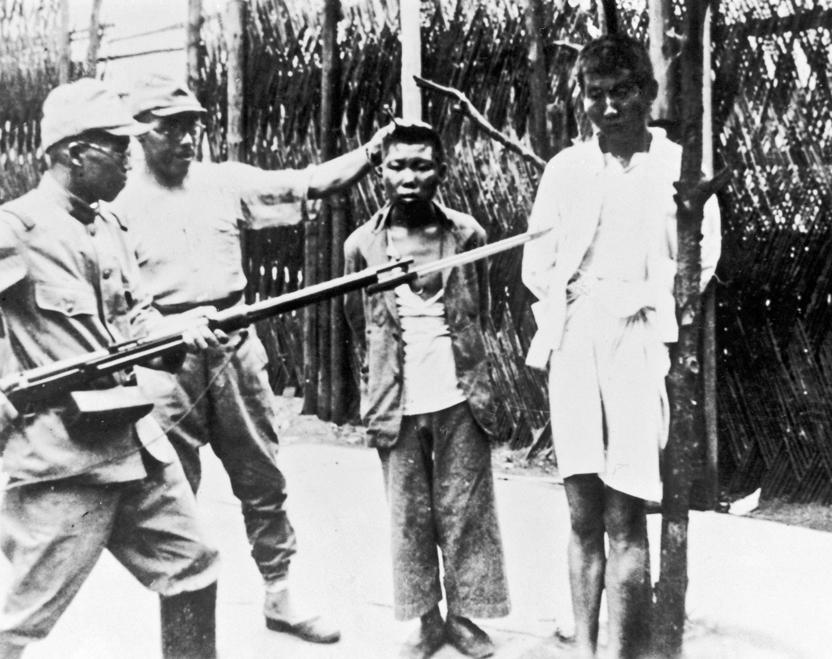A History of World Societies:
Printed Page 907
A History of World Societies Value
Edition: Printed Page 920
Japan Against China
Among those who listened with particular care were young Japanese army officers in Manchuria, the underpopulated, resource-
The rise of Chinese nationalism worried the young officers most. This new political force, embodied in the Guomindang unification of China, challenged Japanese control over Manchuria. In response, junior Japanese officers in Manchuria, in cooperation with top generals in Tokyo, secretly manufactured an excuse for aggression in late 1931. They blew up some Japanese-
In 1932 Japan proclaimed Manchuria an independent state and installed Puyi, the last Qing emperor, as puppet emperor. When the League of Nations condemned its aggression in Manchuria, Japan resigned in protest. Japanese aggression in Manchuria proved that the army, though reporting directly to the Japanese emperor, was an independent force subject to no outside control.
The Japanese puppet state named Manchukuo in northeast China became the model for the subsequent conquest and occupation of China and then Southeast Asia. Throughout the 1930s the Japanese worked to integrate Manchuria, along with Korea and Taiwan, into a large, self-
For China the Japanese conquest of Manchuria was disastrous. Japanese aggression in Manchuria drew attention away from modernizing efforts. The Nationalist government promoted a massive boycott of Japanese goods but lost interest in social reform. Above all, the Nationalist government after 1931 completely neglected land reform and the Chinese peasants’ grinding poverty.
As in many poor agricultural societies throughout history, Chinese peasants paid roughly half of their crops to their landlords as rent. Landownership was very unequal. One study estimated that a mere 4 percent of families, usually absentee landlords living in cities, owned fully half the land. Poor peasants and farm laborers — 70 percent of the rural population — owned only one-
Having abandoned land reform, partly because they themselves were often landowners, the Nationalists under Jiang Jieshi devoted their energies between 1930 and 1934 to great campaigns of encirclement and extermination of the Communists’ rural power base in southeastern China. In 1934 they closed in for the kill, but, in one of the most incredible sagas of modern times, the main Communist army broke out, beat off attacks, and retreated 6,000 miles in twelve months to a remote region on the northwestern border (Map 29.2). Of the estimated 100,000 men and women who began the Long March, only 8,000 to 10,000 reached the final destination in Yan’an.

There Mao built up his forces once again, established a new territorial base, and won local peasant support in five unprecedented ways. First, Mao’s forces did not pillage and rape across the countryside as imperialist and warlord armies had always done. Second, Mao set up schools, albeit for Marxist education, so the nearly universally illiterate peasants could learn to read and write. Third, Mao established health clinics to provide the peasants with basic medical care. Fourth, Mao’s armies, rather than stealing the peasants’ produce, put down their weapons and helped the peasants plant and harvest their crops. Fifth, Communist courts tried the warlords and landlords for crimes against the peasants, who for the first time in Chinese history received economic and social justice.
In Japan politics became increasingly chaotic. In 1937 the Japanese military and the ultranationalists were in command. Unable to force China to cede more territory in northern China, they used a minor incident near Beijing as a pretext for a general attack. This marked the beginning of what became World War II in Asia, although Japan issued no declaration of war. The Nationalist government, which had just formed a united front with the Communists, fought hard, but Japanese troops quickly took Beijing and northern China. Taking the great port of Shanghai after ferocious combat, the Japanese launched an immediate attack up the Yangzi River.
Foretelling the horrors of World War II, the Japanese air force bombed Chinese cities and civilian populations with unrelenting fury. Nanjing, the capital, fell in December 1937. Entering the city, Japanese soldiers went berserk and committed dreadful atrocities over seven weeks. They brutally murdered an estimated 200,000 to 300,000 Chinese civilians and unarmed soldiers, and raped 20,000 to 80,000 Chinese women. The “Rape of Nanjing” combined with other Japanese atrocities to outrage world opinion. The Western powers denounced Japanese aggression but, with tensions rising in Europe, took no action.

By late 1938 Japanese armies occupied sizable portions of coastal China (see Map 29.2). But the Nationalists and the Communists had retreated to the interior, and both refused to accept defeat. In 1939, as Europe edged toward another great war, China and Japan were bogged down in a savage stalemate. This undeclared war — called by historians the Second Sino-